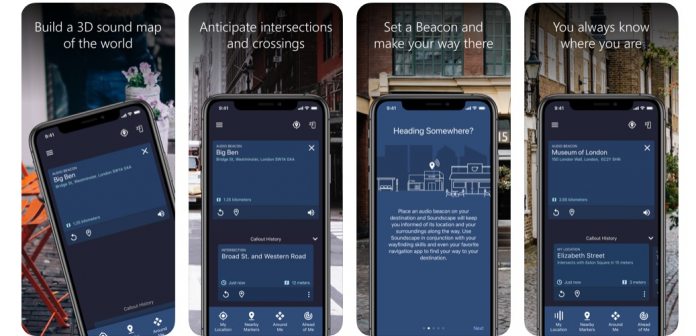By leveraging Bing Maps Local Search and Bing Maps Location Recognition, Soundscape is oriented to users who are blind or have poor vision. By using the intelligent voice mapping technology, the users can move around their neighborhood. It is worth noting Microsoft first detailed Soundscape a year ago, but has expended on the technology in a recent blog post. Melanie Kneisel, a Microsoft Research engineer, says the app uses automatic call outs. “As a person approaches identifiable places and things like businesses, bus stops, and intersections, Soundscape will call out the name of the place or thing from the direction they are located. If you are walking towards a Starbucks that is on your right, you will hear a voice saying “Starbucks” in your right ear to orient you in that direction should you wish to go to Starbucks,” Microsoft explains in a blog post.
Audio Mapping
Soundscape differs to other navigations solutions because it uses audio cues to explain an environment. Users must make mental maps based on route choices and points of interest. “When you approach an intersection the callout is, ’36th street goes left, 36th street goes right, 148th continues ahead.’ You will hear each of those callouts. When the street goes right, you’ll hear it in your right ear. When the street goes left, you’ll hear it in your left ear. You start to learn not just that you are approaching an intersection and what is intersecting there, but you learn the geometry of it. You now know that this is not a T intersection, it’s a four-way intersection and you know which way each of the roads go,” Kneisel explains further. Soundscape is currently only available for iPhone. You can check out the app here. For more details about the service, check out the official website here.




